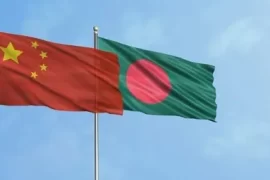Pakistan’s economy is on the brink of collapse as the policymakers there ran out of ways to come out from the turmoil. A series of economic crises led Pakistan to seek assistance from the International Monetary Fund (IMF) for the 13th time since the 1980s.
Despite receiving aid, the country has failed to bring any economic reform that could help the country control government spending or boost revenue. The crisis was escalated by last year’s devastating flood and the unremitting political instability.
Although most of its previous bailout packages are yet to be completed, Prime Minister Shehbaz Sharif’s government desperately sought another US$6.5 billion loan program from the IMF.
How badly Pakistan needs the lifeline
The recent power outage across the country highlights the severity of the economic crisis in Pakistan, which has reached new heights. The country also continues to face the devastating effects of last year’s monsoon floods, which resulted in the displacement of millions of people and incurred approximately US$30 billion in damages and losses in economic output.
The nation’s economic growth forecast has already been cut down to 2% by the World Bank for the fiscal year following the devastating floods last year.
The foreign exchange reserve in Pakistan plummeted to only US$3.09 billion which can cover roughly three weeks of imports where the global standard is to keep forex reserves to afford at least three month’s imports.
Pakistan’s credit rating was downgraded to junk status last year, causing concerns about the possibility of default and lowering lenders’ confidence on the country. Despite successfully making a US$1 billion bond payment last year, long-term dollar bonds are still trading at a distressed level.
Inflation has reached the highest levels in nearly five decades, partly due to the Covid pandemic and the Russia-Ukraine conflict, and any potential price hikes from the IMF to stabilize economy will only worsen the situation.
The following table illustrates the status of the key economic indicators of Pakistan based on the last available data: –
| Key Economic Indicators | Status |
| Inflation | 27.60% |
| Exchange Rate | Record low Devaluation 1 US Dollar = 272.75 PKR |
| Forex Reserve | US$3.09 billion |
| Current Account Balance | Deficit of US$1.22 billion |
| External Debt | US$126.91 billion |
How did Pakistan fall into crisis?
The unstable economic state in Pakistan can be characterized as a Balance of Payments crisis in economic terms. The country is spending more on trade than it is earning, leading to a decrease in its foreign currency reserves and causing the value of the Pakistani Rupee (PKR) to drop. This makes paying interest on foreign debt more expensive and increases the cost of importing goods, putting further strain on the country’s reserves and exacerbating the crisis.
However, according to Kamal Madishetty, a researcher at the Institute of Peace and Conflict Studies in New Delhi, Pakistan’s current economic state is the result of decades of misguided priorities. He attributes this largely to the military’s dominant influence over all other institutions in the country.
The key reason behind the critical situation is that the military establishment of the country is still monopolizing a disproportionate amount of resources, neglecting the needs of the general population, he explained. He added that in 2022, despite the decrease in spending on essential sectors such as infrastructure and education, military spending increased by a staggering 11%.
IMF’s latest demand in exchange for the bailout
This time the IMF focuses on improving the fiscal position through increasing the prices of fuel, electricity, and gas, which are currently subsidized by the government, as well as introducing new taxes. The aim is to make the power sector of Pakistan sustainable and counter the persistent increase of debt in the energy sector. In an attempt to revive the bailout, Pakistan took measures such as releasing its hold on the currency and increasing fuel prices last year. The move led to a ripple effect where the country witnessed the value of the rupee fall by almost 15% in January 2023 which was the largest monthly decline in 34 years. On February 3rd, Prime Minister Sharif described the IMF’s conditions – “tough and beyond imagination.”
Are there any alternative options of funds?
The other lenders from whom Pakistan used to borrow also seemed hesitant to offer any loan to Pakistan. As the default risk continues to rise, the Pakistan government is finding itself more in a tight spot.
Pakistan has obtained new funding from Gulf nations, but they have stopped lending until the country resumes following the IMF program. Saudi Arabia considered approving a US$2 billion loan, but it also changed its approach to financial aid, now making it contingent on the recipient’s promise to reform their economy, similar to IMF conditions.
Pakistan has reportedly received US$1 billion fresh funds from the United Arab Emirates earlier this year and anticipates China to extend a US$1.2 billion loan.
However, it is worth mentioning that approximately 30% of Pakistan’s foreign debt, nearly US$30 billion, is owed to China, which is three times the amount of IMF debt and more than the World Bank or Asian Development Bank combined, according to the IMF. The Chinese loans come with undisclosed terms and conditions, disregard the long-term feasibility of the projects, neglect the environmental and social impacts, and usually carry an interest rate that is 1-2% higher than what is offered by lenders from the Organization for Economic Cooperation and Development (OECD). Despite all the ongoing financial predicament, Pakistan still sought a US$10 billion loan from China for a railway project.








